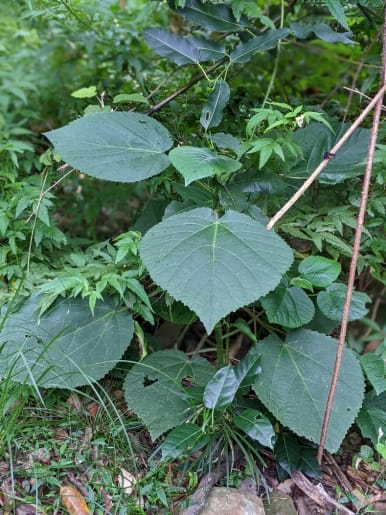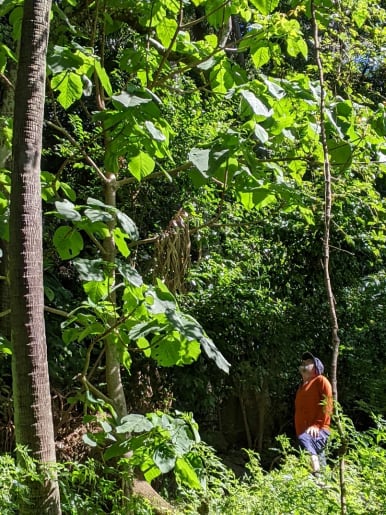By Glenn Paull
My first introduction to a stinging tree occurred when some neighbours and I were pulling out lantana in a gully between our properties on the Illawarra escarpment. I brushed my little finger against a large-leafed plant standing about a metre high, and immediately jolted back in pain.
“What is that!?” I exclaimed.
“That’s a stinging tree”, said my neighbour, “you don’t want to touch those.”
“A stinging tree?” I thought to myself, “Never heard of them.”
Which led to the question, why hadn’t someone told me about them? And so, after some research,
I thought I would write a brief summary for others who were not familiar with them.
Belonging to the nettle family (Urticaceae), there are a couple of species of stinging tree and they all pack a punch. The species native to the Wollongong region is the giant stinging tree (Dendrocnide excelsa), found in subtropical rainforest along the Illawarra escarpment. The common name of Gympie Gympie comes from the indigenous Gubbi Gubbi people of south-eastern Queensland.
Fully grown, it is a medium to large-sized tree with a buttressed base, reaching 40 metres tall and over 6m wide at the base. Like all stinging trees, it is notorious for its extremely painful and long-lasting sting.
How painful?
Very. Consisting of neurotoxin proteins (Gympietides), similar to spider and cone snail toxins, it is more related to venom than a sting, making the stinging tree a truly “venomous” plant. With severe stings, the pain can last for weeks,
if not months.
The stinging hair structure consists of a tip, shaft and bulb. At the tip of the hair is a small bulb that breaks off on contact and penetrates the skin injecting a toxin that is ultra stable, heat-resistant, and able to retain its pain-producing properties for decades. In fact, dried botanical specimens collected a century ago can still sting you!
The venom binds to and fires pain receptors in the nervous system; there are hopes that understanding how these proteins work could lead to the development of new painkillers.
Although there is no known treatment for the sting, first aid recommendations include removing the stinging hairs by applying sticking plaster and pulling it off, or using a warm depilatory wax.
As they mature, the trunk and branches of the giant stinging tree lose their stinging hairs, the leaves become smaller, less hairy, and less venomous. Human contact is most likely to occur with younger, smaller plants, also known as “ankle biters”.
So, keep an eye out for this venomous plant and show it the respect it deserves. The tingling pain in my little finger would remind me of my encounter for a week or so. Each time I would think, “Why didn’t anyone tell me about stinging trees?”











